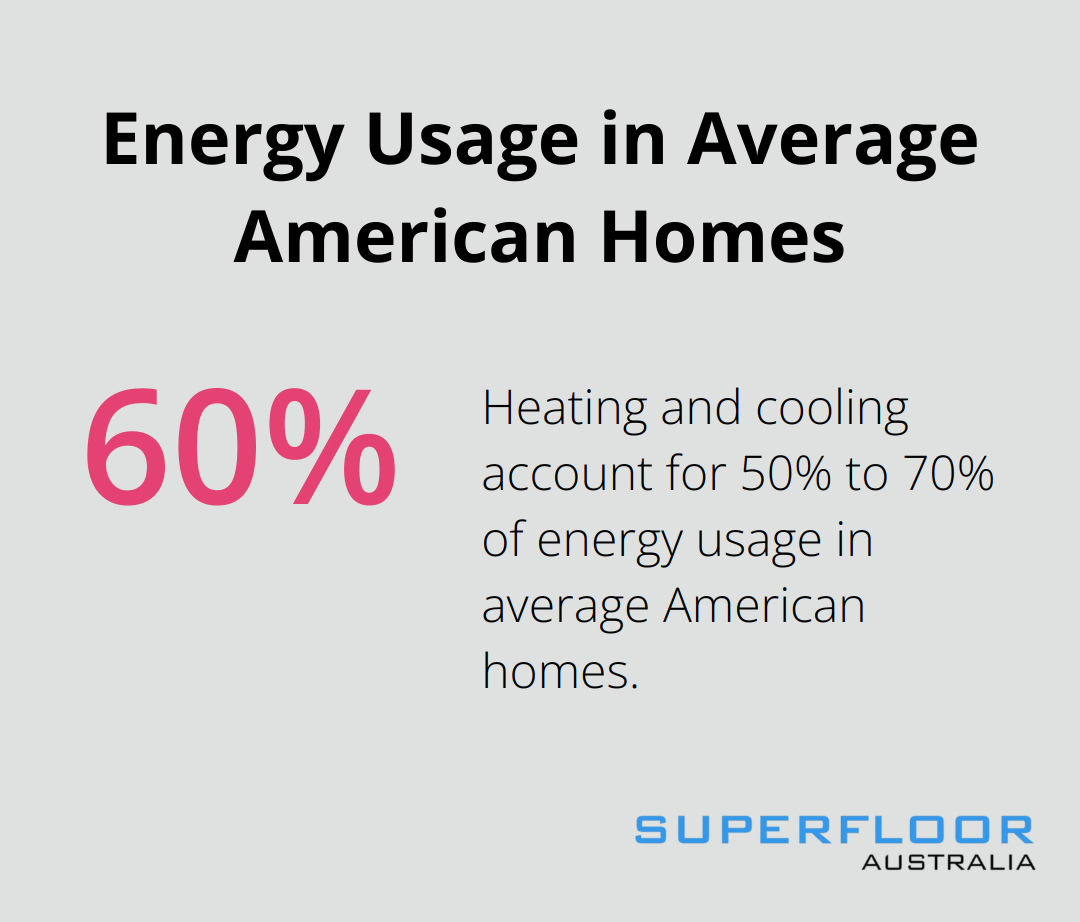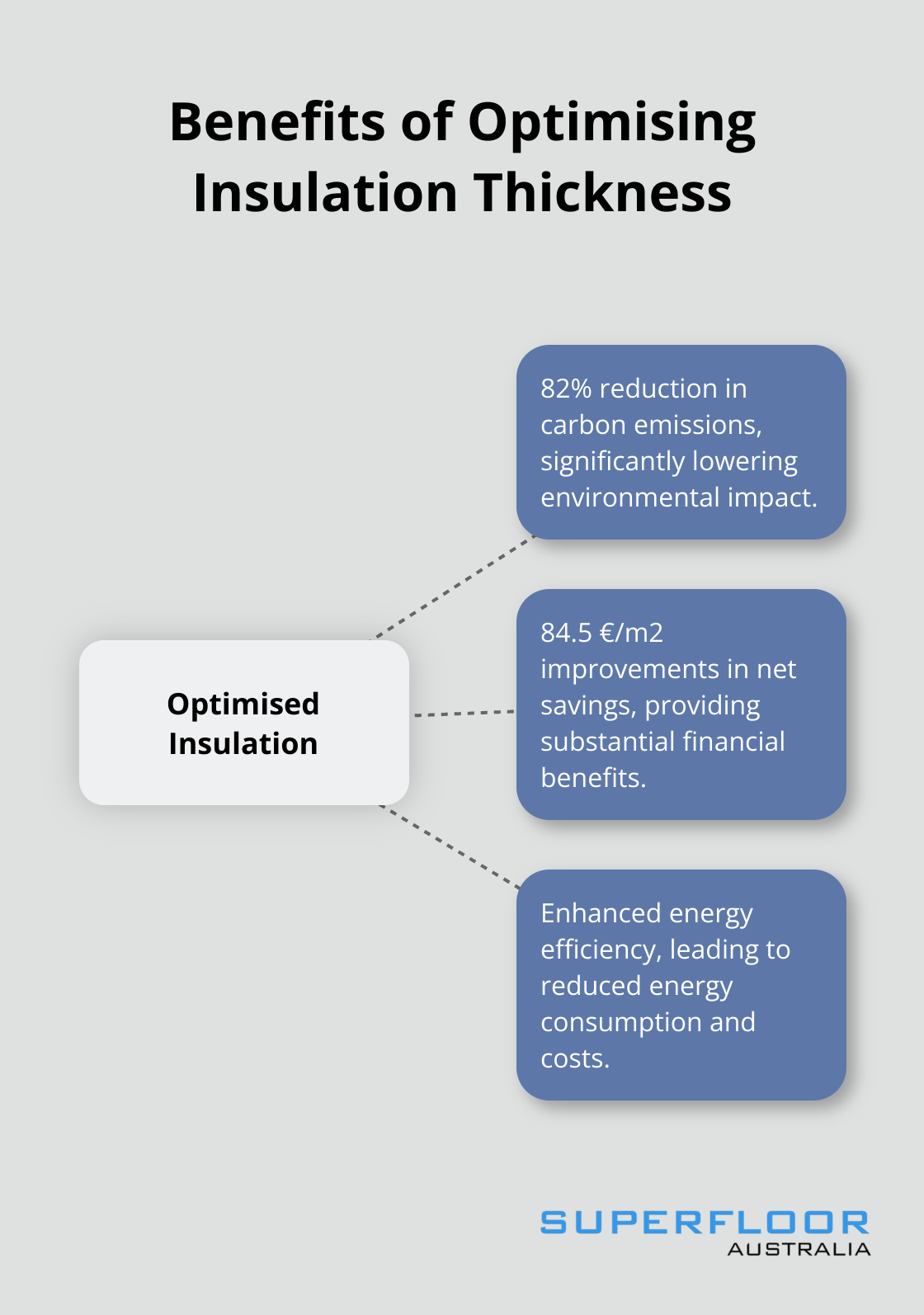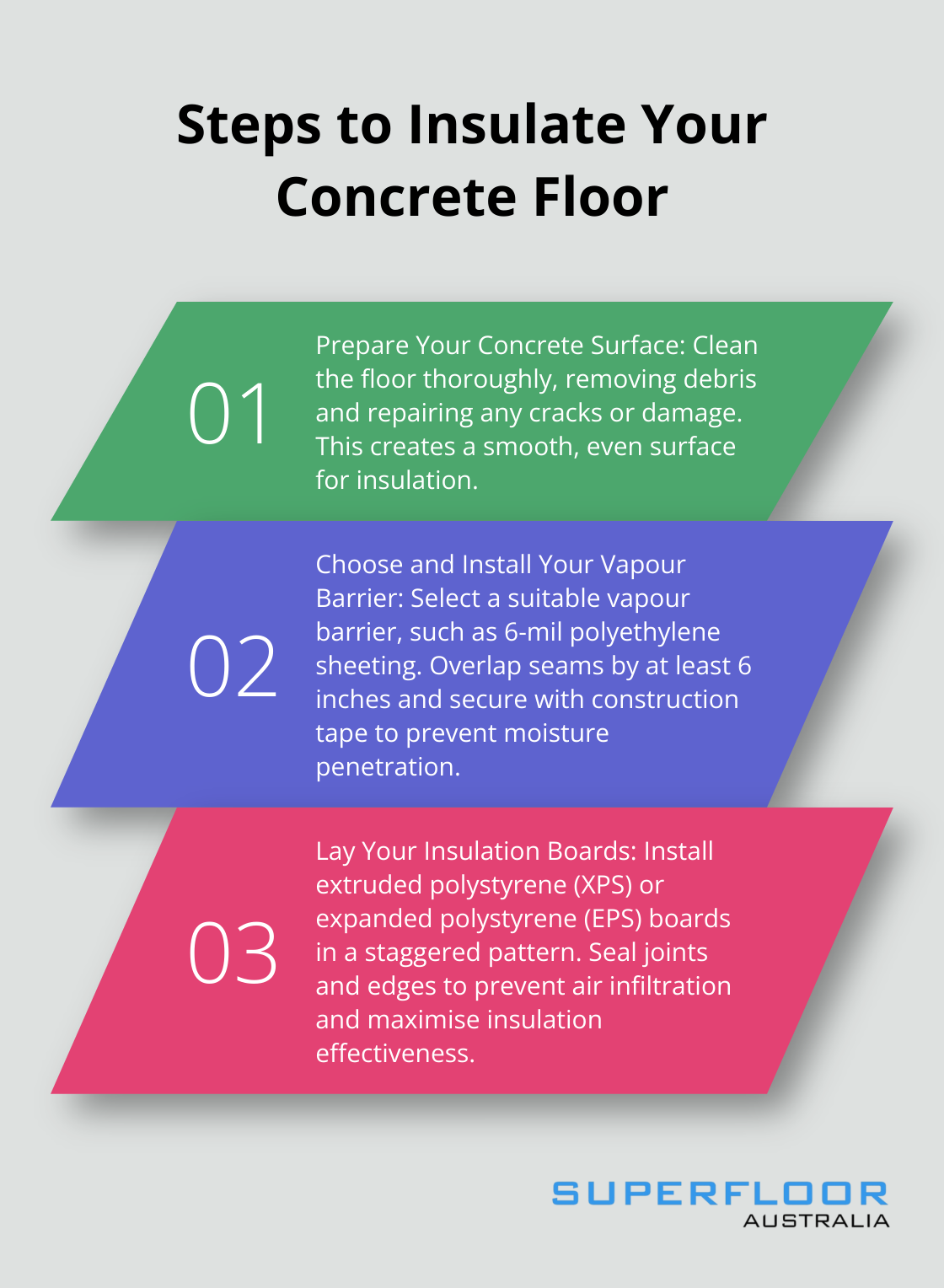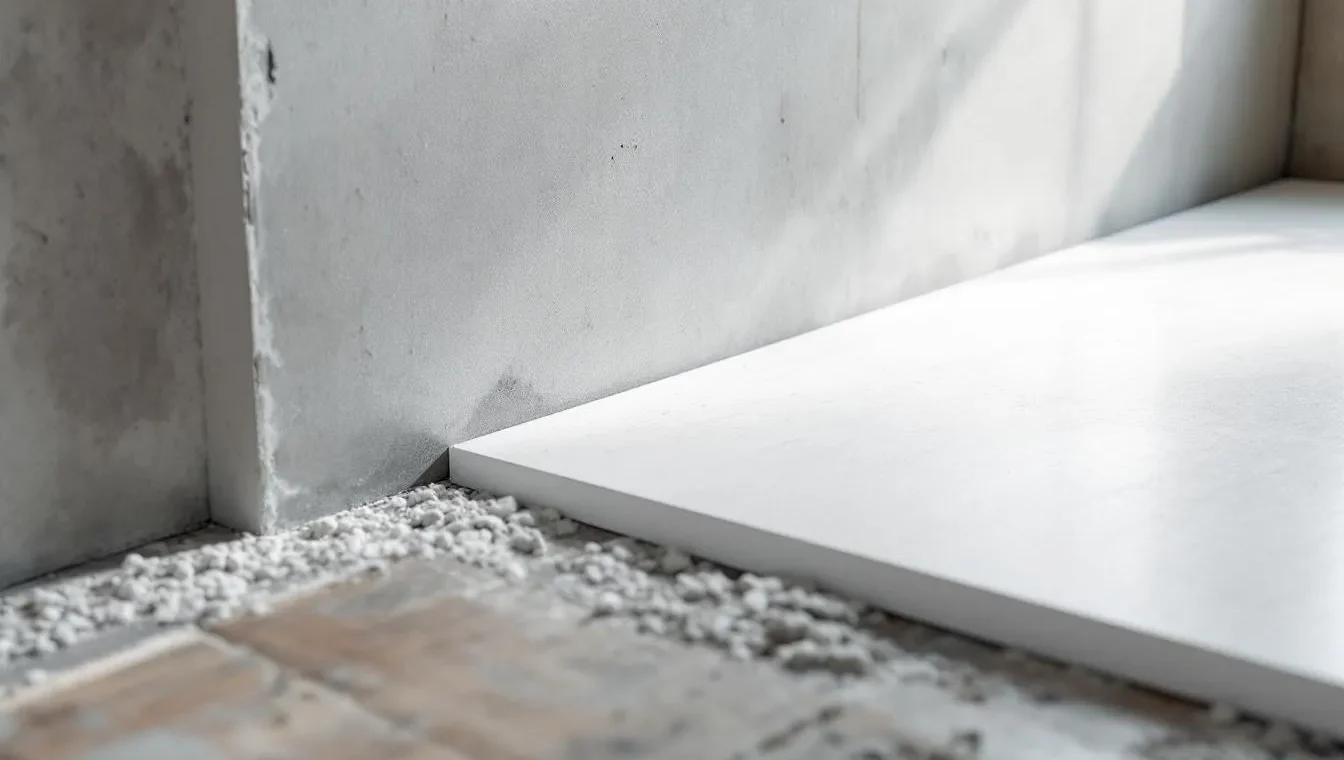At Superfloor Australia, we understand the importance of concrete floor slab insulation for energy efficiency and comfort.
Proper insulation can significantly reduce heat loss, lower energy bills, and create a more comfortable living or working environment.
In this guide, we’ll explore effective methods for insulating concrete floor slabs, from choosing the right materials to implementing various techniques.
Whether you’re building a new structure or retrofitting an existing one, these insights will help you achieve optimal insulation results.
Why Insulate Concrete Floor Slabs
Energy Savings That Matter
Insulating concrete floor slabs transforms energy efficiency in buildings. Heating and cooling account for 50% to 70% of the energy used in the average American home. In Australia’s diverse climate, this translates to substantial year-round savings. Uninsulated concrete floors act as heat sinks, draining warmth from your space (and your wallet).

Comfort Redefined
Insulated concrete floors dramatically improve indoor comfort. They eliminate the cold-to-the-touch sensation in winter and maintain consistent temperatures throughout the year. This benefit proves particularly valuable in areas with extreme temperature fluctuations.
Selecting Optimal Materials
Not all insulation materials perform equally for concrete slabs. Extruded polystyrene (XPS) and expanded polystyrene (EPS) excel due to their high compressive strength and moisture resistance. These materials withstand the weight of concrete and furniture without compromising insulative properties.
For above-slab applications, rigid foam boards offer excellent thermal resistance and easy installation. In retrofit scenarios, interlocking foam tiles provide a quick and effective solution, especially for storage or exercise areas.
Key Factors for Insulation Success
Several elements determine the effectiveness of your insulation project:
- R-value: This measures thermal resistance. Higher R-values indicate better insulation. For concrete slabs in Australia, try to achieve R-values appropriate for your specific climate zone.
- Moisture control: A vapour barrier is essential. It prevents ground moisture from penetrating the concrete, which can degrade insulation over time.
- Installation quality: Even minor gaps significantly reduce insulation effectiveness. Professional installation ensures a tight seal and optimal performance.
- Edge insulation: Slab edges require special attention during the insulation process, as they represent a major source of heat loss.
- Climate considerations: Your local climate dictates the insulation strategy. In Brisbane’s subtropical climate, for example, materials that perform well in both hot and humid conditions take priority.
Long-Term Investment Benefits
The initial cost of insulating a concrete slab might give pause, but the long-term advantages far outweigh the upfront investment. Properly installed insulation can last the lifetime of the building, providing ongoing energy savings and comfort improvements.
With these foundational principles in mind, let’s explore the specific methods for insulating concrete floor slabs effectively.
Effective Concrete Slab Insulation Techniques
At Superfloor Australia, we’ve witnessed the transformative power of proper insulation for concrete floors. This chapter explores three key methods for insulating concrete slabs: above-slab, below-slab, and edge insulation.
Above-Slab Insulation
This method adds insulation on top of an existing concrete slab. It works well for retrofitting or when below-slab insulation isn’t possible. Here’s how to do it:
- Clean the concrete surface thoroughly.
- Apply a vapour barrier (6-mil polyethylene sheeting is recommended). Overlap seams by at least 6 inches and tape them securely.
- Use rigid foam boards (XPS or EPS) for the insulation layer. XPS foam offers a higher R-value per inch than EPS, making it more effective at insulating with a thinner layer.
- Lay the boards in a staggered pattern with tight seams. Secure them with compatible adhesive or mechanical fasteners.
- Install a subfloor over the insulation (pressure-treated plywood works well).
(Note: This method can increase floor height by 1-2 inches, so consider door clearances and transitions to other rooms.)
Below-Slab Insulation
Below-slab insulation provides superior thermal performance by completely isolating the slab from the ground. It’s most effective during new construction. Insulating beneath a concrete slab greatly enhances the energy efficiency of buildings, resulting in substantial cost savings over time. Follow these steps:
- Start with a layer of compacted gravel for drainage.
- Lay down a vapour barrier (6-mil polyethylene with properly sealed seams).
- Install rigid foam insulation boards on top. XPS excels here due to its moisture resistance and high compressive strength.
- Choose insulation thickness based on your climate and local building codes. colder regions might need up to 2 inches of XPS (R-10), while warmer climates might only require 1 inch (R-5).
- Install a wire mesh or rebar grid before pouring the concrete to reinforce the slab and prevent cracking.
Edge Insulation
Edge insulation prevents heat loss where the slab meets exterior walls. It’s applicable for both new construction and retrofits:
For new builds:
- Use rigid foam insulation boards vertically along the slab edge before pouring.
- Extend the insulation from the slab top to at least 24 inches below grade.
For retrofits:
- Excavate around the foundation to expose the slab edge.
- Clean the surface and apply a waterproof membrane.
- Adhere rigid foam insulation.
- Backfill carefully to avoid damaging the insulation.
Recent studies have shown that optimising insulation thickness can lead to an 82% reduction in carbon emissions and 84.5 €/m2 improvements in net savings.

Professional Installation
While DIY is possible for some aspects, professional installation ensures optimal performance. Experts can navigate complex scenarios, ensure proper material selection, and guarantee a high-quality finish.
Climate Considerations
Your local climate dictates the insulation strategy. In Brisbane’s subtropical climate, for example, materials that perform well in both hot and humid conditions take priority. Always consult local regulations and energy efficiency standards when planning your insulation project.
Now that we’ve covered the main insulation techniques, let’s move on to a step-by-step guide for insulating your concrete floor slab effectively.
How to Insulate Your Concrete Floor Step-by-Step

Prepare Your Concrete Surface
Start with a clean slate. Remove all debris, dust, and loose particles from your concrete floor. Use a power washer for stubborn stains or a stiff-bristled brush for lighter cleaning. Allow the surface to dry completely before you proceed.
For older slabs, inspect for cracks or damage. Repair any issues with an appropriate concrete patching compound. This step creates a smooth, even surface for your insulation.
Choose and Install Your Vapour Barrier
Select the right vapour barrier. 6-mil polyethylene sheeting works for most applications. When you install, overlap seams by at least 6 inches and secure them with construction tape designed for vapour barriers.
For areas prone to high moisture, consider upgrading to a 10-mil or 15-mil barrier. The extra thickness provides added protection against ground moisture (which can compromise your insulation’s effectiveness over time).
Lay Your Insulation Boards
Now for the main event – lay your insulation. For concrete floors, extruded polystyrene (XPS) or expanded polystyrene (EPS) boards are top choices.
Start in one corner of the room and work your way across, cut boards to fit as needed. Use a staggered pattern to minimise heat loss through seams. A concrete slab-on-ground without additional insulation has an R-value of about R0.25, which is very low.
Seal Joints and Edges
Proper sealing prevents many insulation issues. Use a compatible foam sealant to fill any gaps between boards and along the edges where they meet the walls. This step prevents air infiltration, which can significantly reduce your insulation’s effectiveness.
For edge insulation, extend your foam boards vertically along the slab perimeter. In new construction, do this before you pour the concrete. For retrofits, excavate around the foundation to access the slab edge.
Add Your Protective Layer
The final step adds a protective layer over your insulation. For most applications, a layer of pressure-treated plywood works well. Secure it to the concrete using masonry screws, but be careful not to compress the insulation excessively.
If you plan to install radiant floor heating, now is the time to lay your tubing or electric mats. Ensure your chosen flooring material is compatible with radiant heat systems.
Professional installation often yields superior results. The initial investment in proper insulation pays off in reduced energy costs and increased comfort for years to come.
Final Thoughts
Concrete floor slab insulation transforms energy efficiency and comfort in buildings. Various methods, including above-slab, below-slab, and edge insulation, offer unique benefits for different scenarios. The choice depends on factors like climate, building type, and whether it’s a new construction or retrofit project.
The long-term advantages of insulated concrete floors are substantial. Homeowners and businesses can expect significant reductions in energy costs, improved indoor comfort, and increased property value. Professional installation often yields superior results, ensuring proper material selection, precise techniques, and adherence to local building codes.
At Superfloor Australia, we deliver high-quality polished concrete flooring in Brisbane. We recognise that proper insulation maximises the benefits of concrete floors (our expertise in concrete honing and polishing complements well-insulated slabs). Our services create surfaces that are beautiful, durable, and energy-efficient.
